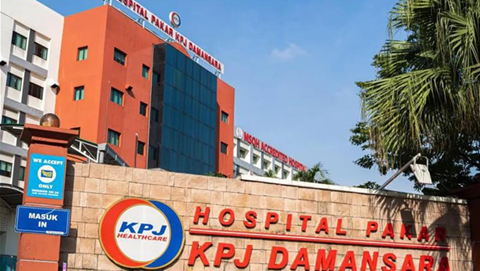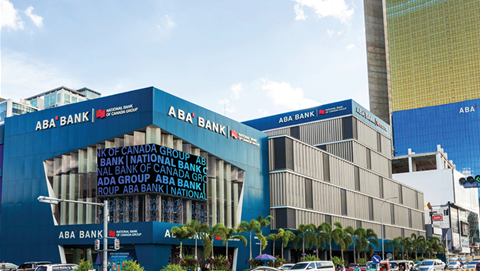The pandemic has changed how businesses had change its operations, and the food and beverage (F&B) sector is no exception. While many F&B outlets in the region had to shut or upend its operations during COVID, the experience gained can make them better prepared for the next pandemic.
From supply chain disruptions to unpredictable buying patterns, iTNews Asia finds out from Remus Lim, Managing Director, SEA, at Cloudera, Alex Teo, Managing Director and Vice President, Southeast Asia, at Siemens Digital Industries Software, and Royston Phua, Vertical Practice Lead for APAC Supply Chains, at Zebra Technologies about the severity of the pandemic on F&B providers and how technology can be helpful to improving business resilience.
iTNews Asia: How has the F&B industry been impacted by COVID-19?
Lim: The F&B sector was severely impacted by COVID-19, with the lockdown measures and dine-in restrictions leading to the sector reporting a year-on-year revenue loss. For instance, Singapore reported an almost 30% shortfall at the end of the third quarter in 2020.
Changes in consumer buying patterns have made demand planning incredibly difficult, with some products experiencing unforeseen shortages or surpluses. Businesses are forced to adapt to growing carrier pricing changes and volume constraints and restrictions, while others have to quickly pivot to omnichannel shopping experiences and multi-vendor strategies.
However, despite the initial fallout, the F&B sector has learned and evolved over the course of the pandemic. Adapting to the new normal, the industry transformed itself into a highly modernised sector. The challenges the food and beverage industry faced during the pandemic accelerated the digital transformation journeys of many businesses in the F&B sector – resulting in an increased business resilience in 2021.
Teo: Lockdown restrictions implemented globally have been instrumental in containing the outbreak of COVID-19. However, the same measures resulted in a combination of supply chain disruptions and fluctuations in consumer demand for the food manufacturing industry.
On the demand side, panic buying drove consumers to stockpile different food products, contributing to unpredictable buying surges. On the supply side, border restrictions limiting the mobility of people and goods meant that food manufacturers had to urgently pivot their processes to operate at the same production capacity with a reduced labor pool, disrupted supply of raw materials, and logistics challenges in distributing perishable food products.
Now more than ever, food manufacturers need to revisit their production strategy to unlock the balance across cost efficiency, and agility and resiliency of their production chain – by leveraging digital technologies that can provide them with real-time visibility on production schedule.
With the increased visibility and a flexible production facility, food manufacturers will be able to control and revise production workflows to match changing demands cost efficiently. Real-time demand monitoring and forecasting solutions can further enable food manufacturers to optimise output to reduce production wastage by manufacturing the right products, at the right amount, at the right time.

Changes in consumer buying patterns have made demand planning incredibly difficult, with some products experiencing unforeseen shortages or surpluses. Businesses are forced to adapt to growing carrier pricing changes and volume constraints and restrictions, while others have to quickly pivot to omnichannel shopping experiences and multi-vendor strategies.
- Remus Lim, Managing Director, SEA, at Cloudera
Phua: The COVID-19 pandemic has left its mark on many industries globally, including the F&B industry. The outbreak introduced unexpected stresses to the food systems, impacted consumption habits, and disrupted global supply chains.
This was especially evident at the start of the pandemic when the industry faced a sharp increase in demand due to consumer hoarding. Despite the improved situation, food processors and manufacturers are still struggling to keep up with increased demand from consumers due to movement restrictions and facility closures that are happening worldwide. In Singapore for example, the closure of the Jurong Fishery Port due to the formation of a COVID cluster resulted in long queues at wet markets as anxious shoppers rushed to get their supply of fish and seafood.
The pandemic resulted in an increased need for food safety and accountability. With the recent surge of COVID-19 cases in Southeast Asia, consumers have become even more concerned with the source, quality, and safety of their food.
iTNews Asia: What are some of the challenges faced in the industry with regard to adopting its digital transformation plans?
Lim: There are 3 main areas:
- Managing costs
F&B businesses have always operated on low profit margins. With the pandemic’s numerous outbreaks prompting multiple lockdowns and constantly changing regulations, F&B businesses have had to endure numerous setbacks, digging deep into their reserves to keep the business afloat.
Those still striving to hold on made the difficult decision to incur further costs to accelerate digital transformation plans.
- Changing the mindsets of non-tech savvy F&B operators
Smaller businesses and hawkers can be resistant to adopting digital tools. Food hawkers in Singapore, for instance, are some of the most traditional businesses and have found it hard to adapt habitual ways of working to digital methods.
Unlike restaurants, hawkers often run their business alone. As they perform multiple roles within their business, the added hassle of learning and managing new digital tools have kept them away from going digital. However, businesses that once resisted digital transformation have had to change their mindset to adapt to the changes wrought by the pandemic.
- Shifting consumer preference
The widespread COVID-19 lockdowns across the APAC region last year drastically increased the already growing demand for omnichannel experiences powered by data. Those businesses that were not already equipped to manage multiple sales channels struggled to cope with the trend of going direct-to-consumer, especially with shifting consumer preferences for take-aways rather than dining in.

The outbreak introduced unexpected stresses to the food systems, impacted consumption habits, and disrupted global supply chains.
This was especially evident at the start of the pandemic when the industry faced a sharp increase in demand due to consumer hoarding. Despite the improved situation, food processors and manufacturers are still struggling to keep up with increased demand from consumers due to movement restrictions and facility closures that are happening worldwide.
- Royston Phua, Vertical Practice Lead for APAC Supply Chains, at Zebra Technologies
Teo: Technologies that can enable food manufacturers to transform into digitally led enterprises have existed for a long time. However, businesses in Singapore – especially SMEs – are still slow to adopt these digital tools, despite understanding its benefits. The manufacturing sector in particular, lags behind industries like e-commerce and finance when it comes to adopting digital tools, citing cost among their key considerations.
Manufacturers are often preoccupied with the high upfront cost of digital transformation. What they often miss, however, is the long-term strategic value of these investments. For example, the integration of automation solutions. Industrial IoT-enabled devices that automate the analysis of real-time production data can help manufacturers streamline different workstreams and schedules, from identifying raw materials that need to be replenished to equipment that needs to undergo maintenance before it breaks down.
Phua: Due to the sheer abundance of technologies and innovations in today’s world, one of the key challenges is finding the right technology tailored for individual digital transformation plans.
Within the F&B industry in Asia Pacific, digitising the food system has been a focus in recent years, especially as COVID-19 continues to disrupt the world. To deliver rising consumer expectations for transparency, technology is key to improving food traceability and transparency.
Effective traceability and transparency capabilities can help obtain comprehensive information, eliminating supply chain blind spots. With a robust IT system in place, technologies such as RFID tags, rugged handheld mobile computers with scanners, and thermal printers, can track items quickly throughout the supply chain and help increase food product traceability.
iTNews Asia: How can analytics help F&B retailers to better manage the supply chain during the disruption, or to help in forecasting future demand and supply?
Lim: F&B businesses typically have smooth-running supply chains, leaving them ill prepared for the unexpected disruptions caused by the waves of outbreaks resulting in lockdowns. In the midst of scrambling to make alternative plans, F&B businesses have learned the importance of agility and need to be better equipped to buffer against supply chain volatility.
Technologies such as artificial intelligence, predictive analytics and IoT have made data the core of their operations, especially in end-to-end supply chains to absorb the impact of similar crises. For F&B businesses, these data provide actionable insights that enable quicker, better informed decisions.
With analytics, F&B businesses will benefit from agile demand forecasting – helping them to be more attuned to their customers needs and the ability to scale their production according to forecasted demand to maximise cost efficiencies.
As the supply chain faces disruption, connecting insights from supply through demand will improve customer satisfaction, lower shipping and expediting costs, and improve cash flow once tied up in excess or unneeded inventory.

Now more than ever, food manufacturers need to revisit their production strategy to unlock the balance across cost efficiency, and agility and resiliency of their production chain – by leveraging digital technologies that can provide them with real-time visibility on production schedule.
With the increased visibility and a flexible production facility, food manufacturers will be able to control and revise production workflows to match changing demands cost efficiently.
- Alex Teo, Managing Director and Vice President, Southeast Asia, at Siemens Digital Industries Software
Teo: Nation-wide lockdowns have significantly slowed down the flow of raw materials and consumer goods worldwide, while food processing was largely affected by operational disruptions due to strict safe-distancing enforcements and labor shortages.
The formula to achieve the agility and resiliency to respond to global disruptions boils down to being able to gain flexibility in production, as well as full visibility and control over production workflows.
By leveraging advanced analytics tools such as Industrial IoT, food manufacturers can monitor and analyse real-time data and leverage smart insights from food production equipment, which in turn allow them to remotely monitor operational processes effectively and reduce maintenance costs significantly.
Advanced planning and scheduling software can also be used to set up systematic food production schedules to help food manufacturers optimise product line changeover times and keep track of raw ingredients stored in the inventory easily.
The ability to manage food inventory visually will allow them to better predict sales forecasts while cloud-driven platforms allow workers to collaborate remotely to make faster decisions. With end-to-end visibility into production, food manufacturers can boost efficiency and reduce operational wastage while remaining compliant with food safety regulations.
Phua: The supply chain was heavily disrupted by the mismatch between supply and demand in the industry. As shutdown and shortages continue to upset the global supply chain, manufacturers in the F&B industry are pressured to maximise production levels and push manufacturing systems to their limits.
Coupled with the increased demand for food supply chain transparency, technology is recognised to play a vital role in meeting these demands by optimising food supply chain resilience.
For example, prescriptive analytics has the ability to intelligently analyse and troubleshoot issues across the supply chain in real-time, interpret the exact cause, and resolve the issue immediately through precise delegation of tasks. These processes allow prescriptive analytics to explore how specific changes will impact the supply chain operations and outcomes, allowing the system to provide improved recommendations as it runs.
Prescriptive analytics can also benefit different aspects of the supply chain. Manufacturers can alter their manufacturing plans according to the potential risks identified by prescriptive analytics, distributors can increase the efficiency of distribution, and retailers can utilise the data to optimise their operations, improving the company’s supply and demand planning as a result.
.jpg&w=800&c=0&s=1)








